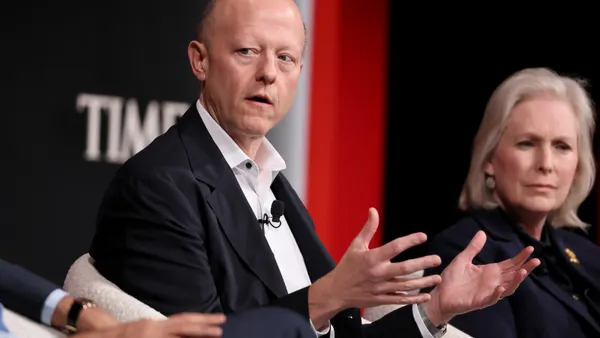Woodforest National Bank is working with software-as-a-service fintech Savana to streamline operations between its core, back-office and customer channels, the bank announced on Wednesday.
The partnership coincides with a massive core conversion Woodforest started three years ago, aimed at transitioning its legacy banking infrastructure to a Finxact core.
The undertaking meant the time was right to also unify departments and service channels in an effort to transition away from the multi-platform solution bank employees currently navigate, said Allison Carpentier, director of digital channels at The Woodlands, Texas-based bank.
“Banks, like every technology heavy company, have a lot of legacy systems,” she said. “You can find yourself requiring your bankers to jump through a few hoops.”
Savana CEO Mike Wolfel said the project is a substantial undertaking for the Malvern, Pennsylvania-based fintech.

As the operational layer above the bank’s core, Savana will deploy its software across Woodforest’s call center, back office and branch operations, Wolfel said.
Woodforest, which operates over 760 branches in 17 states, has been working with Savana for the last year and half.
“Because of the large-scale conversion, it's certainly on the outer edges of our typical implementation time frame,” said Wolfel.
Savana’s typical implementation period for a fintech or de novo bank can be as little as four to five months, he added.
“With a complete system overhaul, all the way down to the core, it’s obviously quite a journey ahead,” he said.
But it’s a journey that’s long overdue for the more than 40-year-old bank, said Richard Ferrara, executive vice president and chief information officer at Woodforest.
“I've been beating the drum on how our core needs to be replaced because of aging technology,” Ferrara said. “It's been a quest of mine for quite some time.”
The lender selected cloud banking platform Finxact to replace its legacy stack in early 2020. Woodforest chose Savana to unify its back-office and front-office amid the transition, because of the fintech’s existing direct integrations with Finxact, Ferrara said.
“We're at a unique position where we are ready to replace our technology stack,” said Carpentier. “A lot of banks really can't at this point. And so we have an opportunity here to replace it with something that is significantly better, as opposed to just simply band-aiding it with some other layer of technology.”
Partnering with Savana will help the bank coordinate processes across multiple systems amid its ongoing core upgrade, Carpentier said.
“When you have disparate systems and processes, it can make a holistic digital transformation really difficult,” she said.
Systems can break down when multiple platforms require bankers to jump from place to place in order to obtain approvals for transactions, she added.
“Being able to do that all in one platform with rules and permissions associated with those processes just makes it that much easier for bankers,” she said.
Woodforest’s tech modernization comes as traditional banks are experiencing increased demand from consumers for enhanced digital services, brought on in part by the COVID-19 pandemic, Wolfel said.
“The whole pandemic was really both a driver and enabler for a lot of banks to really take a serious look at the state of their technology, particularly at the point of customer engagement in the various channels,” he said.
Savana has around 35 clients, including challengers Primis Bank and Battle Bank, as well as traditional firms Live Oak Bank and First Horizon Bank.
Among the regional and larger community banks that Savana works with, Wolfel said he is seeing a consistent theme – many firms are recognizing the need to modernize their systems in order to keep pace with fintechs.
They’re also seeing the opportunities that come with outsourcing certain tasks, he said.
“Historically, banks have controlled a lot of the technology in house,” he said. “We've proven that we’re capable of doing this as a software-as-a-service offering in the cloud, to really offload some of the technical maintenance expenses.”














